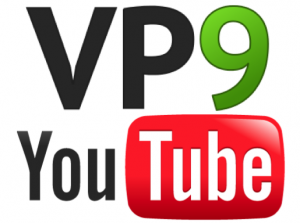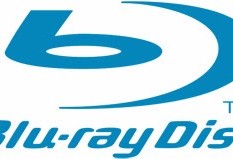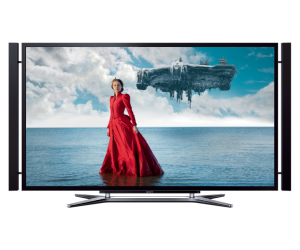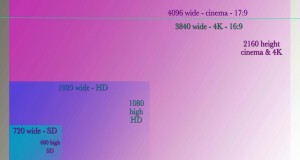By Jon Raymond
 If you aren’t shooting in 4K (aka Ultra HD or UHD), you’re two years late. In two years from now any film you shot in HD will be as obsolete as the stuff you shot in SD. But don’t take my word for it, and expect that within a few weeks or sooner, there will be new advances announced. Keep tabs on 4K news here.
If you aren’t shooting in 4K (aka Ultra HD or UHD), you’re two years late. In two years from now any film you shot in HD will be as obsolete as the stuff you shot in SD. But don’t take my word for it, and expect that within a few weeks or sooner, there will be new advances announced. Keep tabs on 4K news here.
4K is just slightly smaller than digital cinema resolution (6% smaller at 3,840 × 2,160 pixels, 256 pixels less wide) to accommodate the TV 16:9 standard as opposed to cinema’s 17:9. Purists will be annoyed (although 1080 HD is also 16:9).
Could 4K become the new near-first run releasing window (instead of VOD), just as theatrical once was before Day and Date, Ultra-VOD, VOD, and digital platforms became the rage? With 4K Blu-ray, disks become very attractive, versus buffering HD streaming or cable.
 YouTube is already streaming in 4K. Yes, you have to have the hardware and software to see it. So you might want to think about this before your next TV screen, hard drive, or computer purchase. But it’s not that expensive and you can bet it will come down by 50% to 80% in the next two years. Right now most 4K screens are over 50 inches and start around $3K. A player, currently required is around $600. But with the advent of 4K Blu-ray within a year or so, hard drive players will not be required and 4K Blu-ray players under $200 might be the norm.
YouTube is already streaming in 4K. Yes, you have to have the hardware and software to see it. So you might want to think about this before your next TV screen, hard drive, or computer purchase. But it’s not that expensive and you can bet it will come down by 50% to 80% in the next two years. Right now most 4K screens are over 50 inches and start around $3K. A player, currently required is around $600. But with the advent of 4K Blu-ray within a year or so, hard drive players will not be required and 4K Blu-ray players under $200 might be the norm.
Most NLE (non-linear editing) software vendors offer 4K and 6K editing capability. A high end iMac computer editing system with 32GB of RAM is around $3K. You can get a Sony Handicam for $5K, or the RED One (from $7K) and for 6K there’s the RED Epic, and these are standard equipment for many indie DPs. You can have a well furnished 4K production camera and editing outfit for well under $25K, including a 50 inch plus 4K TV. It wasn’t too long ago that the 4K TVs alone were well over that.
Be advised that you should research well any 4K purchase. There are some dubious or bogus deals out there like a $700 4K TV. Some cameras have a 4K sensor. But that doesn’t necessarily translate to a 4K sized image. Look for “Ultra-HD” and check resolution, battery life, and storage capacity specs.
 4K is not viable as a consumer option right now (in January 2014). But by December this will be obsolete news. The Blu-ray specs are being updated to provide for 4K Blu-ray. The Blu-ray Disc Association (BDA) has confirmed it will have spces sometime in 2014.
4K is not viable as a consumer option right now (in January 2014). But by December this will be obsolete news. The Blu-ray specs are being updated to provide for 4K Blu-ray. The Blu-ray Disc Association (BDA) has confirmed it will have spces sometime in 2014.
85 inch 4K screen
4K laptop screens are available and phones will soon be too. Though it makes little sense to me to look at a 4K screen so small. You’d need a magnifying glass to see the detail present. That’s also probably the reason why most 4K TVs are over 50 inches. Manufactures are touting 85 inch screens to take advantage of the detail. That’s a wall of screen. It is truly a home theater resolution (less 6%).
 Streaming 4K over the internet or cable will not likely be viable for most consumers for a while. That means there may be a long window of 4K Blu-ray as the only affordable consumer alternative for 4K. That would leave cable, streaming, and digital downloads in the dust. It could mean a return to theaters and a return to Blu-ray players and disks. It also reduces the threat of piracy if people are interested in 4K quality. 4K at around 100GB of Blu-ray disk space is a lot harder to copy than a 4GB DVD or 2GB SD download. With people wanting to see the new 4K stuff, lower res copies will be even less in demand. If filmmakers require contract terms to distribute only in 4K they might more easily corner 4K Blu-ray markets for their films. This may help to eliminate the problem of the thousands of indie films competing for exposure on digital platforms like iTunes or Vudu. People looking for the quality of 4K will have less places to look and less films to choose from. The 4K films might indicate a commitment to quality from the filmmakers.
Streaming 4K over the internet or cable will not likely be viable for most consumers for a while. That means there may be a long window of 4K Blu-ray as the only affordable consumer alternative for 4K. That would leave cable, streaming, and digital downloads in the dust. It could mean a return to theaters and a return to Blu-ray players and disks. It also reduces the threat of piracy if people are interested in 4K quality. 4K at around 100GB of Blu-ray disk space is a lot harder to copy than a 4GB DVD or 2GB SD download. With people wanting to see the new 4K stuff, lower res copies will be even less in demand. If filmmakers require contract terms to distribute only in 4K they might more easily corner 4K Blu-ray markets for their films. This may help to eliminate the problem of the thousands of indie films competing for exposure on digital platforms like iTunes or Vudu. People looking for the quality of 4K will have less places to look and less films to choose from. The 4K films might indicate a commitment to quality from the filmmakers.
Read more here on the details of broadcasting 4K. Consideration is being given to different compression protocols such as H-264 or H-265. Regardless, it will happen one way or another. This gives time for filmmakers to get 4K productions underway and indicates the lag window offering 4K Blu-ray is very likely:
….It could be possible to fit two UHD channels in a 45Mbps mux or transponder stream – and that’s using H.264 compression; H.265 is anticipated to do better still – the paper’s author, Pierre Larbier, CTO of French video compression technology firm Ateme, suggested 13Mbps may be sufficient for a 4K broadcast. A live test transmission set up specially for CES by US broadcaster Sinclair used 27Mbps over DVB-T2 to deliver 4K images to the Samsung stand, using the H.265 codec.
And this from Richard Wingard on Nexfilx, CEO, Hastings predictions for 4K streaming:
In order to achieve the compression necessary to stream 4K, either the picture quality will be degraded or a new compression standard will be needed. HEVC is still new, and the results are not fully settled yet on how it will perform on general video. It is claimed that HEVC is twice as efficient as H.264 (the best currently-fielded video codec), but 4K video frames are four times as large as 1080p frames. Even granting the claimed HEVC performance (no sure thing), this makes Hastings’ claim that 4K videos will be able to be streamed at 15 Mbps (a bitrate where H.264 struggles with some current 1080p videos) dubious at best. Additionally, a new encoding standard means new decoders on the back-end.
Net neutrality may become less of a threat, at least to indie film distributors and it might even help if people are forced to find 4K titles on 4K Blu-ray instead of easily downloading them digitally.
YouTube’s VP9 may make their platform as viable as 4k Blu-ray. But will ISP (internet service providers) companies handle the bandwidth? Even now when I watch an HD title on Vudu there are occasional interruptions for buffering. It feels like an 8 track player from the 60s. I don’t have a lot of confidence in 4K working that well on your internet or cable based platforms for a while. But a 4K Blu-ray disk in your home player sounds like a pretty likely option that will be affordable within a year or two. To me, as a filmmaker, that means my next film had better be shot in 4K resolution.
One filmmaker says he needs 30TB of drive space to edit in 4K. That’s about $3K of hard drives. Would going back to 35mm make more sense? I don’t think so. There have also been online discussions about needing proxy files to edit 4K in lesser size formats. But are these valid or are they products of industries looking to thwart 4K filmmaking? 4K is a threat to online digital platforms and cable companies. Investments will have to be made to keep up. But technology has an unstoppable momentum, especially considering the players from China and Japan that are moving up the timeline as noted in Filmmaker Magazine.
A few years back a study projected that two million 4K units would be shipping worldwide in 2017. But a recent study projected seven million units in 2016. The result of this change? Changes in the projection of sales to China, which is becoming a big player in the 4K market. China is projected to buy more 4K TVs than North America in the coming years.
TechRadar describes 4K like this:

4K Ultra High Definition is actually a derivation of the 4K digital cinema standard. However while your local multiplex shows images in native 4096 x 2160 resolution, this new consumer format is 3840 X 2160.
This is one reason why some brands prefer not to use the 4K label at all, sticking with Ultra HD instead. However, the numerical shorthand looks likely to stick. As a broad brush label it’s so much snappier!
Digital studios are gearing up 4K releasing with Hollywood:
Alongside Samsung’s CES press conference, Amazon teams up with the Korean computer maker plus Warner, Lionsgate, and others for 4K video. It’s not alone: M-Go and Comcast partner with Samsung too.
What is 4K TV Ultra HD? 10 reasons why you should care:
John Archer says this about 4K in his comprehensive detailed review of the technology:
1. 4K Ultra HD TVs are getting cheaper very quickly
….it’s a rapid reduction in a short amount of time and means 4K sets are now a similar price to the normal Full HD TVs2. 4K Ultra HD is not just a fad
….there are more than 20,000 4K projectors globally, with 40% of all US commercial screens now using 4K Ultra HD digital projectors.3. 4K film and TV is already common and it’s growing
What’s missing is a mean means of distributing those 4K Ultra HD sources… More and more TV shows are now shot in 4K. ….as well as making it possible for 4K-produced TV shows to deliver slightly better picture quality than 2K productions even on 2K TVs, shooting in 4K now future proofs TV shows for the next generation of TV technology. Shooting and post-producing in 4K lets TV show makers to ask for more money during syndication negotiations.….Sony Pictures now insists that any new TV series shot on its Culver City lot uses the 4K format….
4. 4K can recreate the look of 35mm film digitally
With the number of 4K-capable cinemas already high and growing fast, more and more new films are either being converted into 4K Ultra HD digital masters from 35mm celluloid, or filmed directly in the 4K digital format using a new generation of 4K-capable digital cameras.So, when people say there are no 4K Ultra HD sources, that couldn’t be further from the truth. There are loads of them. What’s missing is a means of distributing those 4K Ultra HD sources….It’s not just films that are getting the 4K-treatment, either. More and more TV shows are now shot in 4K. This might seem strange given the current, though soon to change, dearth of 4K-resolution TVs and projectors, but as well as making it possible for 4K-produced TV shows to deliver slightly better picture quality than 2K productions even on 2K TVs, shooting in 4K now future proofs TV shows for the next generation of TV technology. Shooting and post-producing in 4K lets TV show makers to ask for more money during syndication negotiations. At the time of writing 14 TV series shoot in 4K. ….Sony Pictures now insists that any new TV series shot on its Culver City lot uses the 4K format.
5. 4K Ultra HD is far closer to ‘the cinema at home’ than 2K
….it follows that the only way to see at home a film that looks pretty much exactly as the people who made it wanted it to look when they made it for a cinema, is to own a 4K display able to render 4K digital film files in their native resolution….6. 4K Ultra HD delivers detail 2K and Full HD cannot reach
….Having so many pixels of detail also greatly boosts the potential draw distance of pictures, giving them a much more profound sense of depth than you get with 2K. So much so that many viewers feel like 4K Ultra HD images are 3D, even when they’re not….7. 4K is the perfect resolution for full immersion
….4K Ultra HD’s ideal viewing distance seems like a good thing to me. Why? Because sitting at a distance of 1.5 x your screen height means that the screen completely fills your field of vision, making you far more immersed in what you’re watching. In other words, it’s yet another way that 4K Ultra HD helps you achieve at home the sort of experience you usually have to go and seek out at the cinema….8. Native 4K Ultra HD delivery to the home is closer than you think
Actually, some native 4K content is already here. Most exciting, Sony is shipping a hard disc drive system containing 10 full 4K movie transfers and some 4K shorts with its upcoming new X series of 4K TVs, though at the moment this feature looks set to be exclusive to the US. Most digital photos these days, meanwhile, are taken in a native resolution of at least 4K. Your photo slide shows should look a hell of a lot better on a 4K screen.Sony’s also planning a new PS3 App that contains a huge range of 4K photographs, covering everything from nature and wildlife through to classic paintings – the latter even including close-ups of sections of the artworks. YouTube, meanwhile, already supports the uploading and playback of 4K video files – provided your PC has a 4K-capable graphics card.
….a number of broadcasters are already experimenting with 4K broadcast streams, and are increasingly starting to shoot shows in 4K. I’m told 4K broadcasting will be well and truly underway in 3-5 years, and I’m leaning much more towards the three-year end of this scale.
9. 4K Ultra HD can solve controversies and get closer to nature
The BBC has already dipped its toe in the water with a trial of 4K at this year’s Wimbledon…. Sony put micro adverts on the fingernails of tennis player Anne Keothavong to show off the detail levels offered by 4K[this image is only 725px wide]
So you know all those sporting controversies like ‘did the ball cross the line’, ‘did the defending rugby player stop the opponent from grounding the ball for a try’ and ‘did Suarez really bite another footballer as viciously as we think he did?’Well, 4K Ultra HD can solve them all. The way the ultra high-definition format delivers four times as much resolution as a normal 2K signal/screen lets referees and the media to zoom in much closer to the action, without losing so much clarity that it’s impossible to make a key call…. [with sports involved, it’s no wonder 4K is on the fast track- Jon].
10. 4K does wonders for 3D and is essential for ‘glasses-free’
Watch passive 3D on a 4K TV, however, and the horizontal resolution compromise of the passive format is completely removed, leaving you with a stunningly detailed picture unaffected by the crosstalk, loss of brightness and potential flickering issues associated with the active 3D format….
Jon Raymond is an independent writer-producer-director. He’s been a web developer for 17 years and recently came back to the film business in 2005 after a hiatus from the Philadelphia College of Art film school in the 70s. He recently completed a healthcare reform documentary and is in development on two romantic thrillers, while working on numerous other projects. He operates Out in the Street films where you can see more about his projects.






